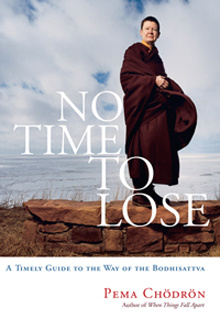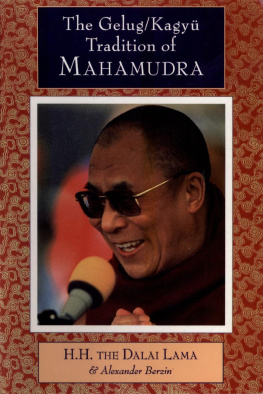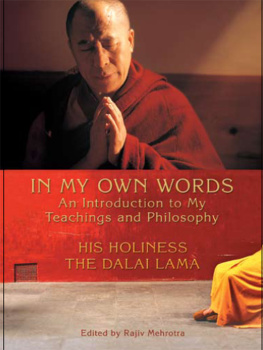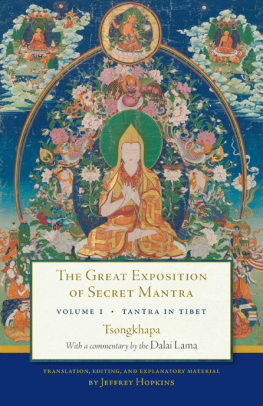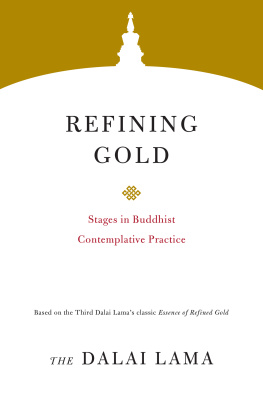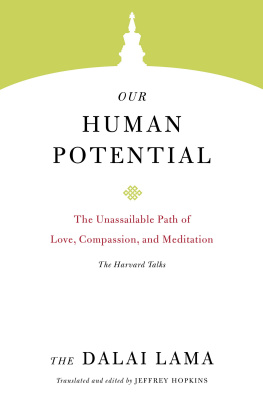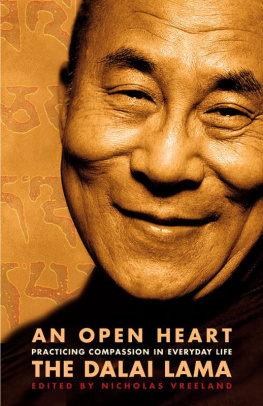



by
The Dalai Lama
edited by
Jose Ignacio Cabez6n




Integration of Christianity and Buddhism; Buddhism and the idea of a creator-god; what does inherent existence mean; does Western physics contradict some Buddhist teachings; space; elementary particles; imagination; existence; images; general advice to practitioners.Dealing with an unsympathetic environment; reconcil-ing emptiness with the fact that objects perform functions; compassion and disciplining people who harm others; vipasyana in sutra and tantra; when is ordination appropriate; meditative stabilization; what religion shall one practice - suitability of various religions.Buddhism - its essence vs. its cultural form; the power of holy places; the inner guru; the individuality of consciousness remains at Buddhahood; nuclear disarmament and world peace; wearing monks' robes in the West.Does Buddha exist apart from our mind; analysis of merit - motivation and object; cessation of concepts and dualistic appearance; why consciousness is not the person; a disciple's attitude toward the guru; efficacy of tantric meditation techniques; relation to non-Buddhist family and friends; flexibility in taking precepts; dharma practice in society vs. retreat; the nature of consciousnessGuru devotion; the three kinds of suffering; benefits of ordination; emptiness in the schools of Tibetan Buddhism; enhancing a viparyana practice; investigation into the nature of the mind; significance of the Kalacakra initiation; types of protector deities; Westerners visiting Tibet; karma and poverty; Native Americans compared to Tibetans; Bodhgaya.

Of all the sites sacred to Buddhists, Bodhgaya is perhaps the most important. Little more than a village on the outskirts of Gaya, one of the larger cities in the state of Bihar (North India), it has nonetheless attracted Buddhist pilgrims for centuries. Over the past several years, it has become a well established tradition for His Holiness the Dalai Lama to spend several days in January or February in residence in Bodhgaya. During this time, Buddhists from all over the world gather to listen to the teachings of His Holiness and to share in days of prayer and meditation. Especially for the Tibetan Buddhists in exile, for the thousands who flock from Tibet for this occasion, and for the Indian Buddhists from the border areas of Ladakh, Kunu, Arunachal Pradesh and so forth, it is an opportunity not only to make pilgrimage to the place of the Buddha's enlightenment, to pray and to make prostrations under the Bodhi tree, and to circumambulate the central temple, it is an opportunity to engage in all of these practices during the visit of the Dalai Lama, who for them and for thousands of other Buddhists throughout the world, is a source of inspiration and the embodiment of living and active Buddhist principles.
For the community of Western Buddhists as well, winter in Bodhgaya is a time for rejoicing, meeting old friends, and especially for practicing mental cultivation. Several meditation courses meet during this time, and there is usually some form of translation available for those who wish to attend the teachings of His Holiness. In addition, beginning in 1981, His Holiness has given group interviews to the Westerners.
Sometimes the discussions, which invariably have taken the form of question and answer sessions, were granted to groups at the close of a meditation retreat and were restricted to those who participated in that retreat (as in the case with the second discussion in this collection). The majority of the meetings, however, were open to the general public. They were held, almost exclusively, in the Tibetan Temple in Bodhgaya.
Because of the spontaneous and dialogical nature of the interviews, they tended to differ in mood and content from year to year. Still, they all share one common quality: that the questions asked are topical, the issues dealt with reflecting the current concerns of the participants, both Buddhist and non-Buddhist. In a very real way, the questions raised bring up problems that all of us face today. The range of topics is vast. We find philosophical discussions of the doctrine of emptiness, questions concerning the role of monks and nuns in the world today, and debates concerning particle physics, not to speak of questions dealing with politics, psychology, and Tantra. In short, within these few pages, we find the entire gamut of religious and secular human concerns.
I myself was present at the first discussion and was the translator for the fourth. I have witnessed through the years the uniqueness of these occasions, and so, when I was approached to bring out that year's discussion in published form, I realized how worthwhile it would be to compile the Bodhgaya discussions in a single volume. To this end, I have gone through tapes of all of the discussions, have scrutinized all portions in which His Holiness spoke in Tibetan to insure accuracy and to avoid the types of omissions to which spontaneous translation is heir. I have, of course, edited the entire text. Nonetheless, with a view to preserving the original flavor of the dialogues as much as possible, I have tried to keep editing to a minimum.
Thanks must go, first and foremost, to His Holiness the Dalai Lama for giving us the opportunity to present our questions and concerns to him in a way which so easily facilitated discussion. Thanks must also go to Dr. Alex Berzin and Professor Jeffrey Hopkins, who also acted as translators during the discussions. I must also thank Miss Joyce Murdoch, who greatly facilitated my task by so kindly presenting me with the copies of taped discussions in her possession. Finally, the Venerable Thubten Pemo and Miss Sheila Kim were of immense help in typing initial drafts of the text.
It is my hope that this short work will bring to the reader a flavor of winter days in Bodhgaya, a very special time in a very special place - a time of days spent in the warm sun listening to the words of His Holiness and of nights spent in the brilliance of the thousands of candles that devout Buddhists offer at the main temple. Truly, there is no greater nostalgia than for times of holiness.
May this work help to break down the barriers separating human beings from each other. May it increase compassion and insight throughout the world.
Jose Ignacio Cabez6n

Next page

